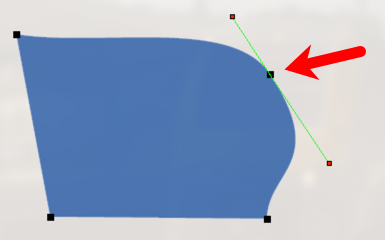A Smart Shape is a vector object similar to those you can draw with Adobe Illustrator. To create these shapes, designers use the Pen tool of Illustrator to draw Bezier points and Bezier curves. Even though Captivate is not equipped with a full-fledged pen tool, you can, however, access these Bezier points and modify your shape via the following steps:
- Right-click the shape you created and choose the Edit Points item in the contextual menu. This action reveals the points that you defined when you created the polygon.
- Move those points to modify the shape. You can also move the green handles to modify the curvature of the connecting lines, as shown in the next screenshot.
- When you are happy with the shape, hit the Esc key on your keyboard to leave the point-editing mode and to select the shape.
Note that you can only move the existing points or modify their curvature; you cannot add or remove points to or from the shape:

Converting predefined shapes to freeform...



